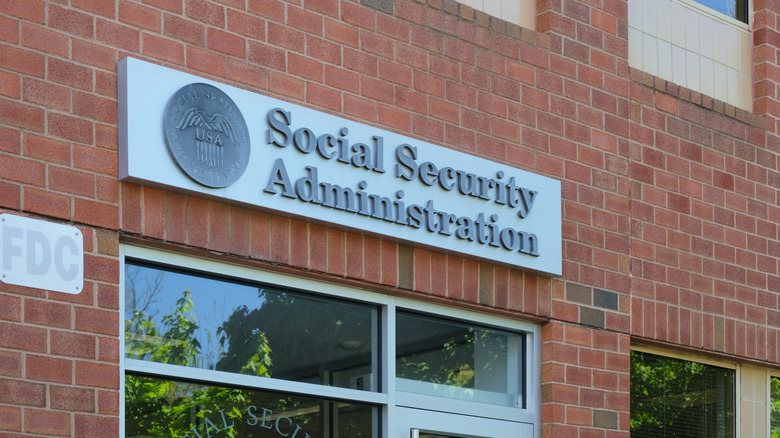What Happens If The Social Security Retirement Age Is Raised To 69?
Currently, for people born after 1959, the full Social Security retirement age (FRA) is 67. However, those who qualify for benefits can decide when to retire — and therefore how much of their benefits they'll get. For instance, workers can expect their full benefits amount if they wait until FRA to retire, whereas those retiring between the ages of 62 and 66 will only receive partial benefits based on how many months before their FRA they retire. For example, those claiming retirement benefits more than 36 months before their FRA would experience a reduction of 5% annually. Meanwhile, those who wait to retire until they're 70 can receive benefit amounts even higher than their FRA amount.
However, at the current trajectory, the Social Security program is set to run out of money in 2034 — meaning that the funds needed to fully pay those entitled to Social Security benefits would be depleted. Because of this, and in an effort to improve the health of the program's finances, some politicians have recommended that the FRA be raised to 69. This would mean that U.S. workers would ultimately receive fewer checks over the course of their lifetime, despite paying into the system. Plus, according to a 2024 letter from the Congressional Budget Office, people who need to start their benefits before FRA would have an even larger benefits reduction than they do under the current policy.
Understanding Social Security's cost-cutting measures
If this proposed retirement age increase did become law, FRAs would rise gradually as opposed to all at once. Workers born in 1965, for example, would have an FRA of 67 years and three months. Each year after that, the FRA would extend by three more months until workers born in 1972 or afterwards would need to be 69 before hitting their FRA. The thing to keep in mind is that workers born in 1972 currently have a FRA age of 67. If these workers choose to take reduced benefits under the current law, they'd receive 30% less in benefits than their FRA amount. However, under the proposed change in which the FRA becomes 69, their benefits reduction would instead be a whopping 40%.
With all of that said, whether or not the SSA's cost cutting measures will include raising the FRA is still unclear. In a September tweet, @SocialSecurity quoted SSA Commissioner Frank Bisignano as saying that a raise in the FRA was not being considered. Plus, additional actions are taking place to preserve SSA funds including the cost-cutting change of stopping physical checks – effective September 30, 2025. This switch to electronic checks is projected to save the government $4+ per person annually, according to Social Security Matters. Also, to boost office efficiency, retirees now need to make appointments to visit a Social Security office despite the fact that some Social Security offices were closed due to budget cuts.

